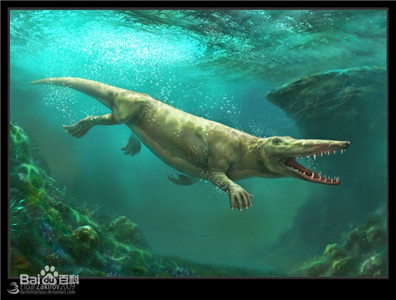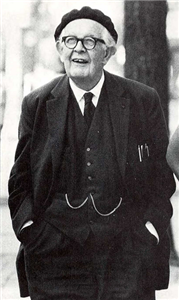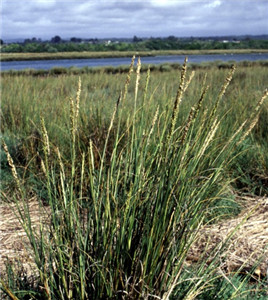你造嗎? 托福閱讀和聽力都以生命科學、自然科學、社會科學和藝術四大學科為考察背景,其中有好多文章的背景知識都幾乎重疊呢,不信咱們一起來看幾個~
1. 聽力TPO10-L1=閱讀TPO2-2
這兩篇文章都討論了鯨魚的進化,其中兩只鯨魚進化過程當中的“萌物”都有現身。
Ambulocetus

Ambulocetus是一種古老的鯨魚,它既能在陸地行走也能在海洋里游泳,因此又名“游走鯨”。它的化石發現證明了鯨魚是從陸生哺乳動物進化而來的。
Well, then also in Pakistan they found a fossil of another creature, which we call Ambulocetus. The name Ambulocetus comes from Latin of course, and means “walking whale that swims”. It clearly had four limbs that could have been used for walking. It also had a long thin tail, typical of mammals, something we don’t see in today’s whales. But, it also had a long skeletal structure. And that long skeletal structure suggests that it was aquatic.(源自TPO)
Basilosaurus

Basilosaurus 背脊鯨,最初被認為是爬行動物,后來研究表明它是從陸生動物進化而來的海洋哺乳動物,是鯨魚的前身。
Basilosaurus was a creature that we’ve already known about for over a hundred years. And it has been linked to modern whales because of its long whale-like body. But this new fossil find showed a full set of leg bones, something we didn’t have before. The legs were too small to be useful. But it clearly shows Basilosaurus’s evolution from land creatures. (源自TPO)
2. 聽力TPO10-L4=閱讀TPO21-3
這兩篇文章都分析了“childhood amnesia”(兒童健忘癥,小孩子記不得三歲之前發生的事情)產生的原因,其中一位叫Jean Piaget的心理學大神(貌似長相也很萌呢,所以也可以稱為“萌物”奧~)多次登場,童鞋們一定要膜拜一下。
Jean Piaget

Jean Piaget(讓·皮亞杰),瑞士兒童心理學家,他的認知發展理論(cognitive development)是任何一個研究兒童認知心理學者不可不知的學科典范。
他將兒童認識分為四個發展階段:
1) Sensor motor Stage(感知運算階段,0-2歲)靠感覺獲取經驗,在1歲左右,發展出物體恒存(object permanence)的概念,以感覺動作發揮圖式的功能。
2) Preoperational Stage(前運算階段,2-7歲)已經能使用語言及符號等表征外在事物,會使用不具保留概念,不具可逆性,以自我(egocentrism)為中心。
3) Concrete Operations Stage(具體運算階段,7-11歲)了解水平線概念,能使用具體物質操作來協助思考。
4) Formal Operational Stage(形式運算階段,從11歲開始)開始會類推,邏輯思維達到較高水平,開始具有抽象思維。
Piaget suggested that because they don’t have language, children younger than 18 to 24 months live in the here and now, that is they lack the mean to symbolically represent objects and events that are not physically present. Once language starts to develop from about age 2, they do have a system for symbolic representation and can talk about things which aren’t in their immediate environment including the past. Of course he didn’t claim that infants don’t have any sort of memory, it’s acknowledged that they can recognize some stimuli, like faces. (源自TPO)
3. 聽力TPO19-L3=閱讀TPO22-1
這兩篇文章都討論了Spartina這種奇葩植物的特性,以及特性產生的原因和用途。
Spartina

Spartina,米草屬,生長在沿海的鹽堿地,生命力極強,當然是由于它本身奇葩的特性,來看來自TPO的一段簡介:
In fact, the Spartina genus is the dominant plant found in salt marshes. You can find one type of the Spartina, Saltmarsh Cordgrass, growing in low marsh areas. In higher marsh areas, you are likely to find a Spartina commonly called Salt-meadow Hay. So how is the Spartina able to survive in an environment that would kill most plants? well, it is because salt marsh grasses have found ways to adapt to the conditions there.(源自TPO)










